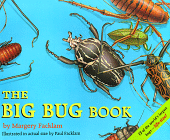Each participant in the conference signed up for three professionally directed teaching seminars in which a variety of topics were covered. The three seminars I signed up for were Educational Games Kids Love, Integrating Instructional Technology Into the Classroom, and Integrating Music/Movement into the classroom.
I thought that each seminar was so meaningful that I would share each one on this blog! Hope you enjoy!
1. Educational Games Kids Love:
This workshop was presented by Scott R. Hnasko a wonderfully exciting 5th grade teacher who has a ton of ideas when it comes to making enjoyable games for kids. Not only did he share the game design but he made it clear how they connect to academic studies.
There were so many games introduced I don't know where to begin! One of the common themes that was presented was the use of two easels. Each team received an easel and the instructor would ask a question. After the question was asked the team had to write the answer (with the correct spelling) on the easel faster than the other team.
A variation to this same was something he called "Beauty/Ugly Contest" in which teams would both use the easel and a description of something would be given. Students would then draw the most beautiful or the most ugly version of whatever was asked to be drawn.
"Eraser Race" (above) was another very interesting game. On the board were different numbers inside boxes covering a length of space. Students were asked a simple math problem and if they answered correctly they got a turn to slide the eraser down the board and try and score the highest amount of points by making the eraser stop underneath the the box with the highest amount of points on the board. It was almost like shuffle board with a mathematics twist. The were four erasers (four turns) and each eraser was slid by a different student. The game seemed like something kids would really enjoy!
Overall It was a great workshop and the games were really exciting. Scott Hnasko is really great at his craft!!
2. Integrating Instructional Technology Into the Classroom:
Dr. Sara Rutledge is extremely technologically savvy. The amount of resources that were given during this seminar would take me all day to blog (literally all day). The packet that she handed us during the seminar had so many resources that I couldn't even count them (it was awesome). I thought I could share a couple resources that I thought were interesting and beneficial.
The IEP app! Holy cow who knew that there would be such a tremendous organizing application for a cell phone like the IEP app. IEP (for those that don't know) are educational plans designed to fit the individual needs of student who require special services in some form. Examples of students who have IEP's could include students with disabilities, behavior problems, or in some cases students who have experienced a traumatic home life.
The app introduced in the seminar had all the factors that a paper based IEP would have only in an electronic interactive folder that can be stored right on your phone. This app will be an amazing tool to use while teaching. Definitely check it out! The best part about the app? Its free!!

The last thing that I found interesting and useful was a device that she shared with us that connects a phone to a computer. I sometimes struggle with understanding how these technological phone apps can translate into concrete lessons that students can complete in the classroom. With the device that she shared with us in the seminar, anything you download on a phone can be connected to a computer, and displayed on a smart board which can then be used by a student. I believe the device needed was just a certain type of iPhone charger.
Overall I thought it was an extremely useful seminar. I definitely wanted to stay and learn more!
3. Integrating Music Into the Curriculum
Phil Wilson was the 2010-2011 Alabama teacher of the year. He was one of the guest speakers at the PSEA conference and I was very glad that I had signed up for his personal seminar in advance.
Mr. Wilson's seminar was directed around three themes; the moving child, the singing child, and the listening child. Each type of child has a specific set of characteristics to follow when implementing them into the curriculum.
The moving child will develop body awareness by recognizing beats and relating music to sports or other relate able content. Additionally, moving will also promote socialization and imagination. Here, Mr. Wilson is showing us an example of the moving child (doing the hand jive).
The singing child develops a form of expression or communication, can develop beginning letter sounds, and can have fun by reading/singing non-sense words. Here Mr. Wilson and the class are singing apples and bananas, a song that substitutes different letter sounds in different verses.
The listening child can be a form of perspective or analysis. Puppets or interactive readings can be used in the "listening child" curricular understanding. Here Mr. Wilson incorporates musical instruments into different character parts within a popular story.
Overall the seminar was very meaningful. Children (especially young children) benefit in so many ways form having music integrated into their learning and interaction. Mr Wilson, an amazing nationally recognized teacher, showed us some great ways of accomplishing music integration effectively.









.JPG)

.JPG)
.JPG)






























.jpg)


.gif)




